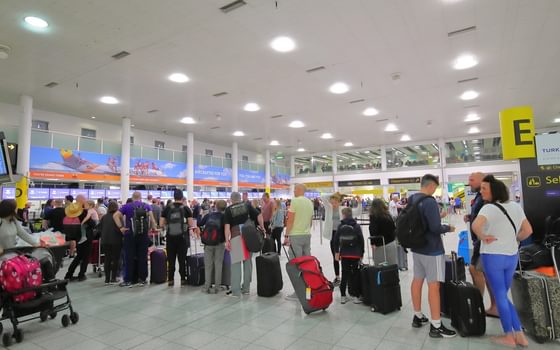Blaming the blackout on net zero won’t keep the lights on
The blackout in Spain and Portugal is a reminder of the complexities involved in modernising our energy systems. Rather than retreating from net zero we need to rise to the challenge.
29 April 2025
This week a massive blackout swept across Spain and Portugal, plunging millions into darkness and disrupting critical infrastructure. The outage, which also affected parts of southern France, has ignited debates about the resilience of modern power grids and the role of renewable energy in ensuring energy security.
Spain’s grid operator, Red Eléctrica de España, reported a “very strong oscillation in the power flow of networks, of unknown origin,” which led to the disconnection of Spain’s electricity system from the broader European grid. This disconnection caused a cascade of failures, resulting in a significant drop in electricity consumption across Spain by 50% around 12:30 PM.
In the aftermath, some media outlets, including The Telegraph and Daily Mail, have pointed fingers at net-zero policies and the integration of renewable energy as culprits for the blackout. Such assertions are not only unfounded but also detract from the real issues at hand.
The blackout was not caused by an overreliance on renewables but rather by a complex interplay of grid dynamics and infrastructure vulnerabilities. Blaming net-zero policy without evidence serves only to politicise the transition to clean power and hinders constructive dialogue on grid modernisation.
The incident underscores a critical technical challenge: maintaining grid inertia. Traditional power systems rely on the kinetic energy of spinning turbines in fossil fuel and nuclear plants to stabilise frequency and absorb disturbances. As we transition to inverter-based renewable sources like wind and solar, which lack inherent kinetic energy, the grid becomes more susceptible to frequency fluctuations.
Without adequate inertia, the grid’s ability to respond to sudden changes in supply or demand diminishes, increasing the risk of outages. This highlights the need for innovative solutions to replicate the stabilising effects of traditional generators in a renewable-dominated energy landscape. But this is an engineering challenge that can be overcome and Britain is showing the way.
“Contrary to fears, the UK is demonstrating that a renewable-powered grid can be both reliable and resilient.”
Contrary to fears, the UK is demonstrating that a renewable-powered grid can be both reliable and resilient. Scotland, for instance, achieved a milestone in 2022 by generating enough renewable electricity to meet 100% of its consumption needs. These achievements were realised without significant blackouts, showcasing the feasibility of a clean energy future.
The UK’s National Grid is proactively addressing the challenges of reduced inertia by investing in technologies like synchronous compensators, flywheels, and battery energy storage systems. These innovations provide synthetic inertia, helping to maintain grid stability even as the energy mix shifts towards renewables.
To prevent the possibility of any blackouts, it’s imperative to invest in infrastructure that enhances grid flexibility and stability. One key solution is the deployment of large-scale batteries, such as the Pillswood project near Hull, which at the time of its commissioning was the largest battery storage facility in Europe. These systems provide a rapid response to fluctuations in electricity supply and demand, helping to smooth out volatility.
In addition, technologies like flywheel energy storage and synchronous compensators are being deployed to manage grid fluctuations as we transition to renewables. Greener Grid Park in Scotland is deploying flywheel and supercapacitor technologies to deliver synthetic inertia. This projec mimics the stabilising effect of spinning turbines, providing crucial frequency response services to the grid. These technologies are forming the backbone of the UK’s energy future and the UK’s National Grid is allocating substantial resources towards these technologies.
“By investing in smart grids and modernising the energy system, we can ensure a reliable, sustainable, and secure energy future.”
The blackout in Spain and Portugal serves as a stark reminder of the complexities involved in modernising our energy systems. Rather than retreating from renewable energy goals, this event should galvanise efforts to enhance grid infrastructure and embrace technological advancements.
This is an amazing engineering challenge that harks back to the advancements made during the Victorian era — a time when Britain invested in bold infrastructure projects and scientific ambition. Sceptics of innovation were common then too: critics doubted the feasibility of the telegraph, ridiculed the railway as dangerous, and warned that mass electrification would upend society. Yet these voices of caution — the 19th-century equivalents of today’s Telegraph and Daily Mail — were ultimately drowned out by the ingenuity and determination of engineers and inventors who built the systems we now take for granted.
By investing in smart grids and modernising the energy system, we can ensure a reliable, sustainable, and secure energy future. The path to a more sustainable world is not without challenges, but blaming every issue on net zero will not keep the lights on.
Image: iStock
Topics Climate change






